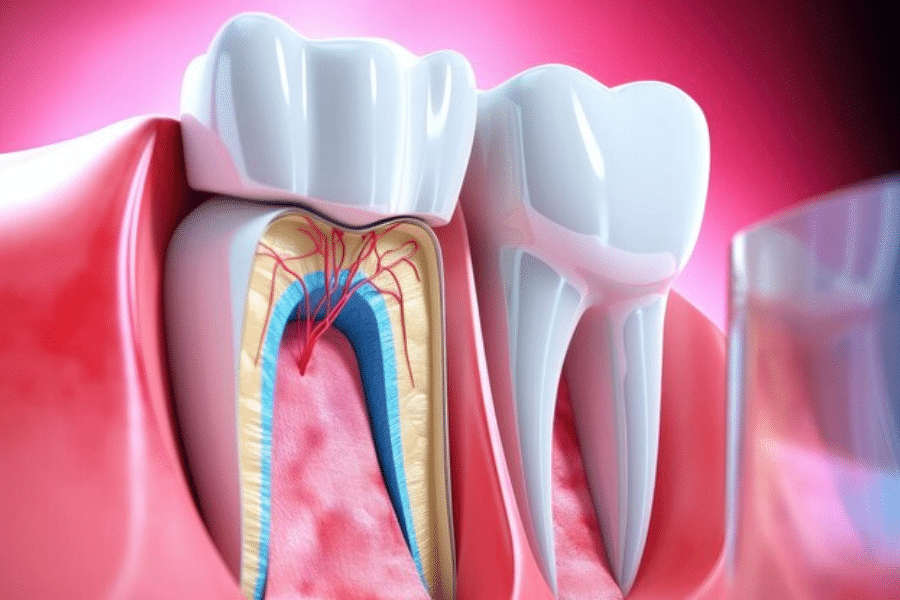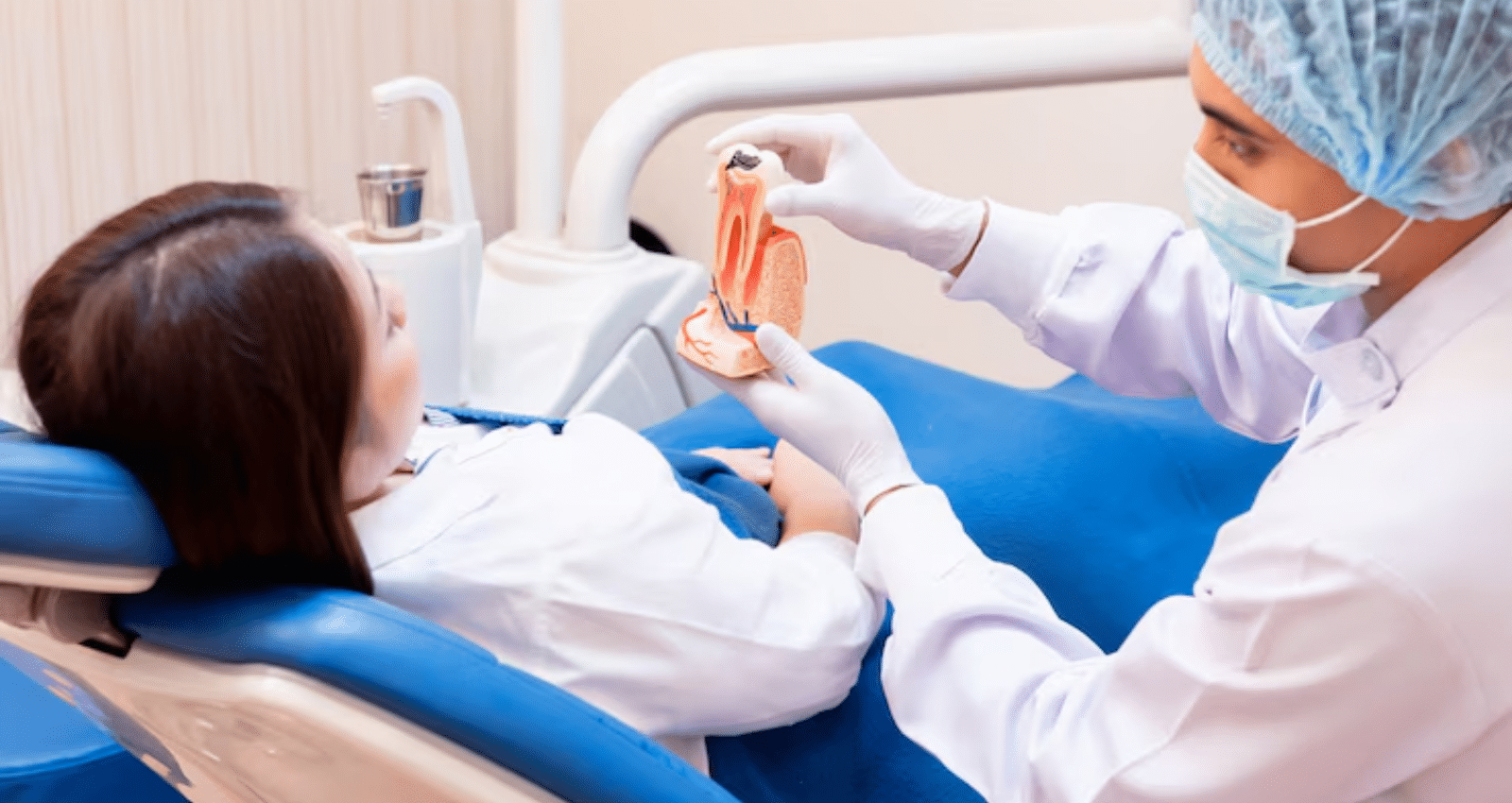Root canal treatment is a common dental procedure designed to save a tooth that is severely infected or damaged. Despite its reputation, modern root canal therapy is relatively painless and highly effective. However, as with any medical procedure, it requires a certain amount of recovery time. Understanding what to expect during the recovery process can help you manage any discomfort and ensure the best possible outcome. In this article, we’ll explore how long it typically takes to recover after a root canal treatment, what factors influence the recovery time, and tips for a smooth recovery.
What is Root Canal Treatment?

Before diving into the recovery process, it’s essential to understand what a root canal involves. The procedure is necessary when the pulp, the soft tissue inside the tooth, becomes inflamed or infected due to deep decay, repeated dental procedures, or cracks in the tooth. If left untreated, the infection can lead to severe pain, abscesses, and even tooth loss.
During a root canal, your dentist or endodontist removes the infected or inflamed pulp, cleans and shapes the inside of the root canal, and then fills and seals the space. After the root canal, the tooth is typically restored with a crown or filling to protect it from further damage and restore its function.
Factors Influencing Recovery Time
Several factors can influence how long it takes to recover after a root canal treatment. These include:
1. Severity of the Infection
- The extent of the infection in the tooth and surrounding tissues plays a significant role in recovery. A more severe infection may cause more post-treatment discomfort and require a longer recovery time.
2. Number of Root Canals Treated
- Some teeth have multiple root canals, and treating several canals may lead to a slightly longer recovery period compared to a tooth with only one canal.
3. Condition of the Tooth
- If the tooth was severely decayed or damaged before the root canal, the recovery might take longer. The structural integrity of the tooth can impact how quickly it heals.
4. Presence of a Dental Crown
- If a temporary filling was placed after the root canal and you need to return for a permanent crown, you might experience additional discomfort after the crown placement. However, once the crown is in place, the tooth will be stronger and better protected, aiding in the overall recovery.
5. Personal Health and Healing Response
- Your overall health and how your body responds to the treatment can also affect recovery. People with conditions like diabetes or those who smoke may experience a slower healing process.
Timeline of Recovery
The timeline for recovery after a root canal treatment can vary, but the general stages are as follows:
The first 24 to 48 Hours
- The first 24 to 48 hours are when you’re likely to experience the most discomfort. The treated tooth and surrounding area may be sensitive, and you may experience mild swelling. Over-the-counter pain relievers can help manage any pain. Avoid chewing on the treated side and stick to soft foods during this period.
3 to 5 Days After Treatment
- By the third day, most people notice a significant reduction in pain and discomfort. The swelling should start to subside, and you can begin to reintroduce more solid foods into your diet. However, it’s still advisable to avoid chewing directly on the treated tooth until it has been fully restored with a crown.
1 Week After Treatment
- By the end of the first week, any remaining pain or sensitivity should be minimal. You may still need to visit your dentist for a follow-up appointment or to have a permanent crown placed. At this point, the treated tooth should start to feel almost normal.
2 Weeks and Beyond
- Two weeks after the root canal, you should be fully recovered. The treated tooth should no longer cause discomfort, and you can resume your normal diet and activities. If you haven’t already, you’ll likely have a permanent crown placed by this time, which will protect the tooth and restore its full function.
Signs of Complications
While most people recover smoothly from a root canal, it’s essential to be aware of potential complications that may require further attention. If you experience any of the following symptoms, contact your dentist promptly:
Persistent Pain
- If the pain doesn’t subside within a few days or worsens over time, it could indicate an underlying issue, such as a missed canal or a developing infection.
Swelling
- Some swelling is normal, but if it increases or persists beyond a few days, it may indicate an infection that needs additional treatment.
Allergic Reaction
- Although rare, some people may have an allergic reaction to the materials used during the root canal, such as the sealant or medication. Signs include itching, rash, or difficulty breathing.
Loose Temporary Filling or Crown
- If your temporary filling or crown becomes loose or falls out, contact your dentist as soon as possible to prevent reinfection of the tooth.
Tips for a Smooth Recovery
To ensure a smooth and speedy recovery after your root canal treatment, follow these tips:
1. Follow Your Dentist’s Instructions
- Your dentist will provide specific aftercare instructions tailored to your situation. Follow these guidelines carefully, including any recommendations for medication and dietary restrictions.
2. Manage Pain Appropriately
- Take any prescribed pain medication or over-the-counter pain relievers as directed. Applying a cold compress to the outside of your cheek can also help reduce swelling and discomfort.
3. Maintain Good Oral Hygiene
- Keeping the treated area clean is crucial to prevent infection. Brush and floss your teeth gently, avoiding the treated tooth until it feels comfortable.
4. Avoid Hard or Chewy Foods
- Stick to soft foods for the first few days after your root canal. Avoid hard, crunchy, or sticky foods that could damage the treated tooth or cause discomfort.
5. Rest and Avoid Strenuous Activities
- Rest is essential for recovery. Avoid any strenuous activities that could increase blood flow to the treated area, leading to more swelling and discomfort.
6. Attend Follow-Up Appointments
- Don’t skip your follow-up appointments with your dentist. These visits are crucial to monitor your recovery and ensure the tooth is healing properly.
Recovery after a root canal treatment typically takes about one to two weeks, with most discomfort subsiding within the first few days. Factors such as the severity of the infection, the condition of the tooth, and your overall health can influence the recovery time. By following your dentist’s aftercare instructions and taking good care of your teeth, you can ensure a smooth recovery and enjoy a healthy, pain-free smile.

